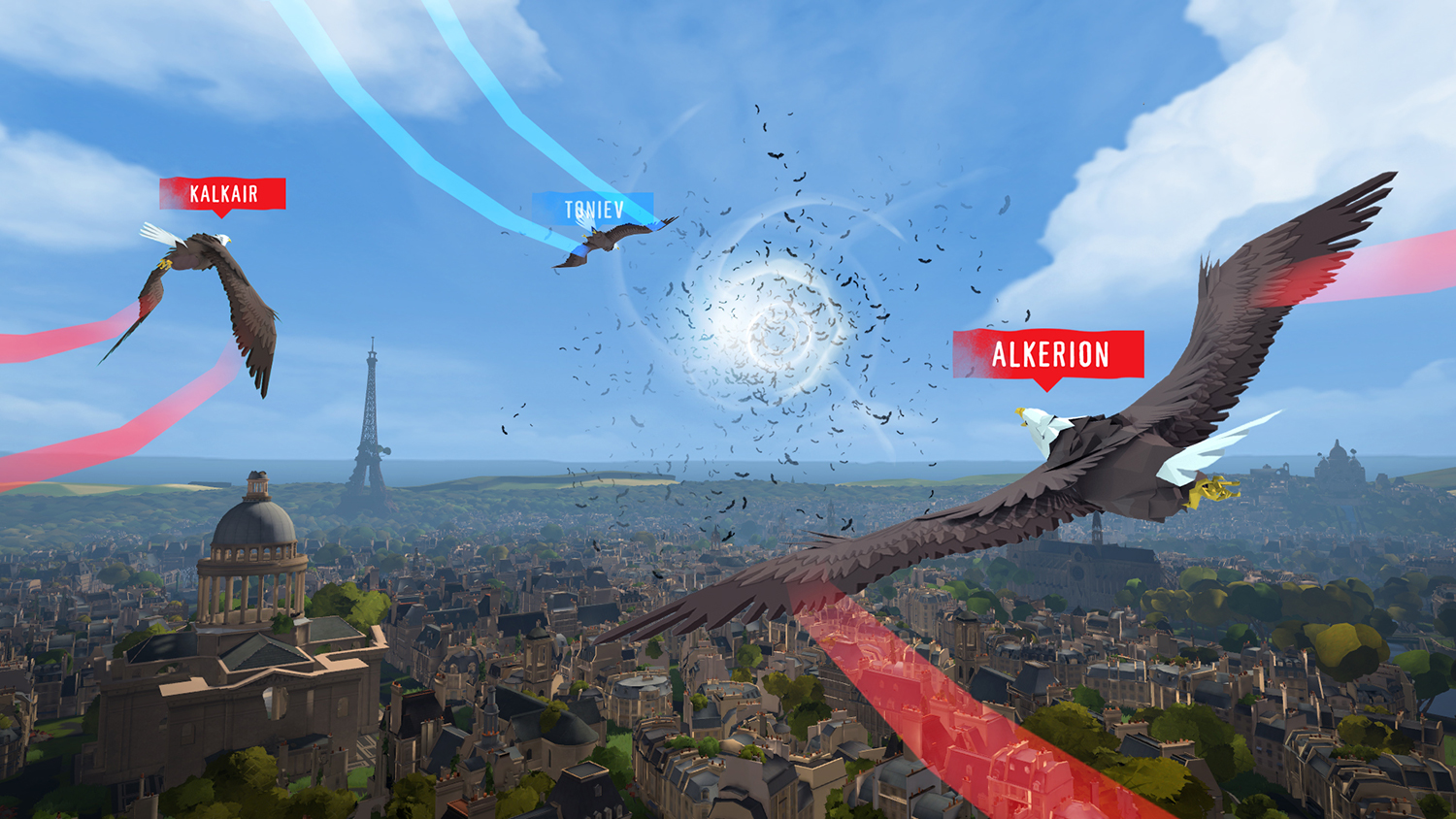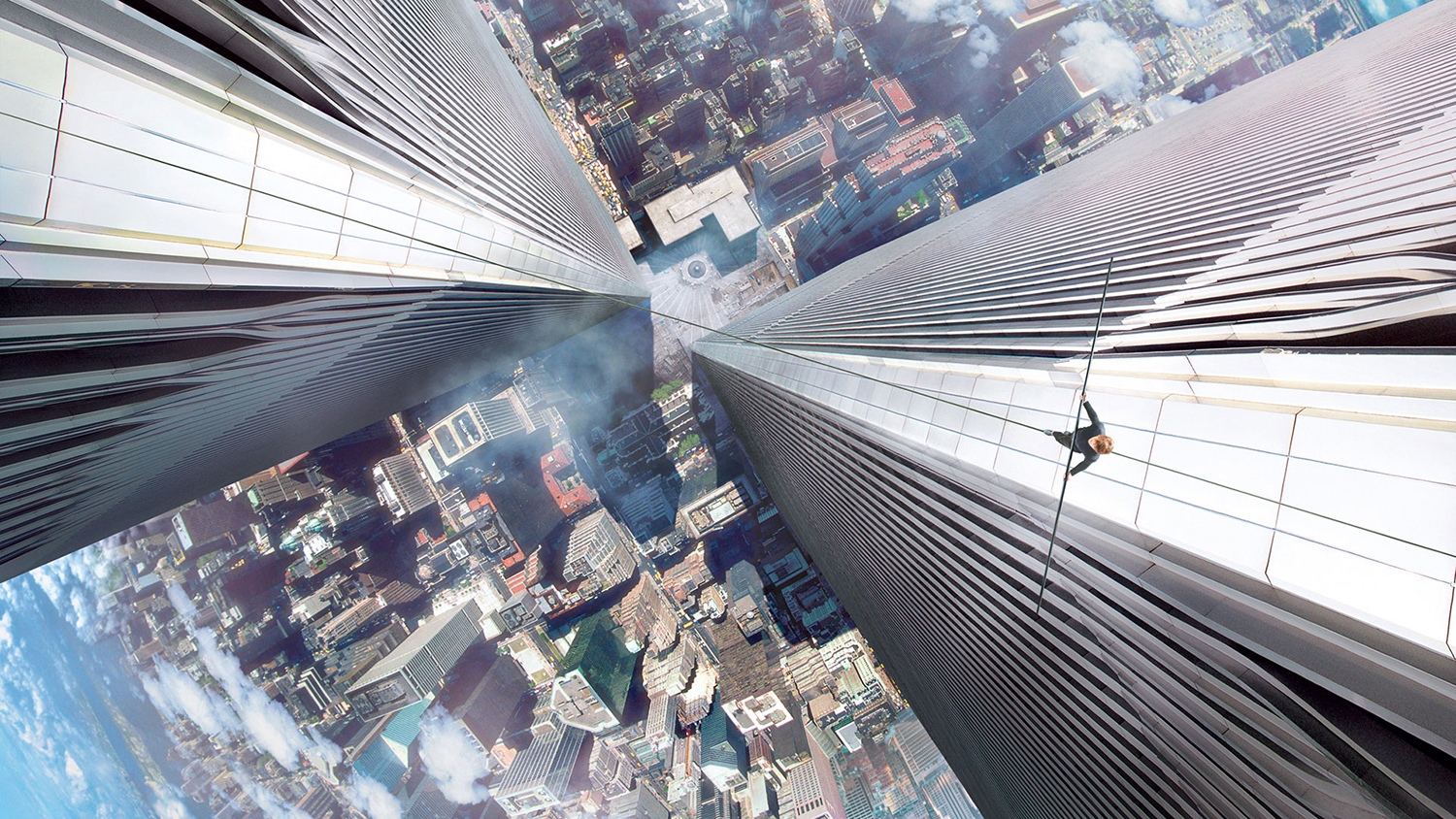With major partners across multiple industries, and exclusive content, the potential of IMAX’s VR Experience Centres is truly limitless.
The room looks like an office cubicle from the future, and I’m seated in what appears to be an ordinary lounge chair. Strapped to my head is an HTC Vive VR headset and a pair of headphones. But this seemingly non-descript bit of furniture has some tricks up its sleeve. Designed by a company called D-Box, it’s fitted with moving hinges to jolt and rattle your body — and it’s about to catapult me into another world.
Suddenly, I’m propelled around a spiraling shoot hundreds of feet above an arctic landscape before diving into a glittering river, through frosted ice caves. Eventually, I’m inside a cartoon rabbit’s toilet, and by the end of the ride, my heart is pounding and I’m more than a little disoriented.
This isn’t Disney’s latest Star Tours ride, and it’s not exactly an arcade game, either. It’s part of an all-new take on VR from cinema magnate IMAX (that’s right, IMAX) called The IMAX VR Experience Centre. The movie megacorp, which currently boasts around 1,200 theaters globally, is investing millions in VR in hopes of pushing the tech to the masses. I took a trip down to Los Angeles for the debut to check out the new digs for myself.
The IMAX VR Experience Centre
When we reported IMAX’s plans to partner with emerging VR company Starbreeze last year to utilize the brand’s new StarVR headset, we were scratching our heads. Why would IMAX — a company known for its mondo screens and cutting-edge cinema technology — want to dip its humungous toes into VR? The chain that makes the largest screens in theaters is now investing in the smallest.
The layout feels like an arcade, movie box office, and laser tag hall rolled into one.
After seeing IMAX’s new venture in person, however, we changed our tune. Tucked into a former hat factory near LA’s popular theme mall The Grove, IMAX’s new flagship facility has a relatively simple mission at inception: expose as many people as possible to the wonders of VR – and along the way, collect real-world data to find out if “location-based” VR is fit for a full-scale global rollout.
The pilot facility is stuffed with 14 VR “pods,” each of which is equipped with either Starbreeze’s StarVR headset or the industry-favorite HTC Vive. The Oculus Rift may be the most famous (or possibly infamous) VR headset, but IMAX chose the StarVR and Vive headsets for good reason. Along with tracking your head movement, each utilizes sensors to inform you of your environment’s physical limitations (in IMAX’s case 12 feet squared), thus allowing you to move around freely in a small space without bumping into the walls. In addition to the VR headsets and a pair of headphones, each pod has its own tailored accessories, including controllers, haptic subwoofer vests, and yes, even a motion chair.
Walking into the facility, the layout feels like an arcade, movie box office, and laser tag hall rolled into one. A white desk just past the entrance sits in front of an IMAX-blue screen, listing a slew of different VR adventures, each of which costs $7-10 for around 5-10 minutes of VR fun. Behind the desk is a pseudo-industrial style room that serves as the prep area to give customers the skinny before being led into the VR chamber beyond.
Perhaps due to its lineage, IMAX currently sells its VR tickets in movie-theater fashion, complete with show times. The company also sells a “sampler pack” of its content for $25. But IMAX Chief Business Development Officer, Robert Lister, is quick to say details like this could easily change, potentially including options like buying tickets on your phone, a monthly subscription option, or even a bundle pack with movie tickets.
“We’re in the wild west of VR right now,” Lister told Digital Trends. At this stage, it’s all about figuring out what works, and what doesn’t.
VR “Experiences” in the flesh
The word ‘experience’ is employed often when referring to VR and its use here is telling. The vagary allows IMAX to be extremely flexible in terms of what kind of content it hosts – and already, the different adventures delve beyond gaming.
You can play typical first person shooting games, too, including the adrenaline inducing (and physically exhausting) John Wick Chronicles. The hottest ‘experience’ in the room, Wick employs the StarVR headset matched with an impressively realistic replica sub-machine gun, letting you jump into the shoes of the famed assassin.
“We’re in the wild west of VR right now”
Starbreeze’s headset has a vast 210-degree field of vision (a full 100 degrees beyond that of the Vive), and once you get used to it, the wide field allows you to explore the world around you from virtually every angle, even as you crouch behind turrets, or dive on the ground to avoid strafing bullets and take out the bad guys. Embarrassingly, hours after the experience, my legs felt every bit of those few intense minutes of mortal battle.
Also on tap for the tour was a Star Wars experience called Star Wars: Trials on Tatooine, which allows you to wield a lightsaber in defense of one R2-D2. As a hopeless Star Wars dork, I was compelled to give it a go. Other experiences included a boxing game, a flight adventure called Eagle Flight, and even a tightrope walk above New York City called simply The Walk, based on the biopic of the same name. While it’s fun to look around the virtual city skyline, the latter experience is one of the few that suffers for lack of space in the little pods – you can’t walk all the way across the virtual wire.
The most immersive experience I tried was the roller coaster-style simulation detailed at the intro, Rabbids VR Ride, based on Ubisoft’s popular Rayman Rabbids franchise. More than any other, this experience transported me to a different world, tricking my brain and tingling my senses nearly as much as a “real” theme park ride. That’s when I realized IMAX really has something here. Sure, you can spend $800 to get a Vive at home, but even hardcore gamers and tech heads aren’t likely to drop a wad of cash on a motion chair.
IMAX sees its VR Experience Centres landing in the smaller auditoriums and lobbies of cinema multiplexes. In order to draw people in, the company hopes to create complementary VR experiences that work together with films, similar to John Wick: Chapter 2’s release in tandem with The John Wick Chronicles. “We want to ‘eventicize’ VR the same way we eventicize movies,” IMAX CEO Richard Gelfond told Digital Trends.
Think about it: Mom and Dad bring the kids to the latest Star Wars movie, but the first stop is the new Star Wars VR experience. The simulation could not only bring new elements of the film into the mix, but also expand the film’s theatrical audience – a win-win.
Helping secure the future of VR through partnerships
To make an immediate splash in VR, IMAX is looking for strength in numbers. The company has used its considerable industry might to partner with a slew of powerful players in gaming, technology, and entertainment.
Its partners include film giants like Sony, Lionsgate, and Lucasfilm’s VR branch, ILMxLabs; gaming firms like Skydance Interactive and Ubisoft; alongside theater giants like AMC, Regal, and China’s JinYi. It also created a $50 million Virtual Reality fund with nine other investors to create at least 25 interactive VR content experiences over the next three years, across all VR platforms. And then there’s the gear.
The experience transported me to a different world, tricking my brain and tingling my senses.
IMAX and Google have partnered up to create a new cinema-grade VR camera to develop high quality “3D 360-degree content experiences,” on track for a mid 2018 launch. The brand is also working closely with Starbreeze and Acer to develop a next-gen VR headset to present “industry-leading VR resolution.”
In addition, IMAX is one of a slew of investors alongside Warner Bros., Twentieth Century Fox, and even Steven Spielberg, working on a room-scale VR experience called Dreamscape. Dreamscape does away with the wires of traditional VR headsets by strapping the computing system on your back. Lister shared one of his early Dreamscape experiences in which he and a friend shared a VR space via computer-generated avatars, and passed a virtual torch back and forth in a VR cave. Even in its nascent stages, Dreamscape sounds like one of the most promising innovations in VR to date – one step closer to the VR grail, Star Trek’s holodeck.
Oddly, full-length VR films are not something the company is really interested in. “I think right now people want something that’s not so much 360-video, they want something interactive,” Lister said. “I think you can have a great two-hour movie experience on your couch with an OLED TV or in an IMAX theater, and I don’t know that a headset’s going to replace that any time soon.”
Coming to a theater near you?
After a soft opening in early January, IMAX says about 5,000 customers have roamed its VR halls, 75 percent of which were new to VR, and the company says it has so far received a 90 percent satisfactory rate. In addition, the majority of visitors with their own VR headsets at home said they’d come back to the facility. Gelfond said business has ramped up by 50 percent each of the last two weeks – without any advertisement – and the facility is on track to become profitable.
IMAX already has plans to open an additional five Experience Centres in California, New York, and Manchester, U.K., and, if successful, those pilot programs could lead to a full-scale international rollout.
For now, IMAX is taking things slowly. The brand that revolutionized the movie industry through constant innovation is applying the same lessons learned there to VR. With its considerable industry might at the ready, and an adventurous goal of bringing VR to the masses on a global scale, the potential here is as limitless as VR itself. The key, as always, will be the content.










